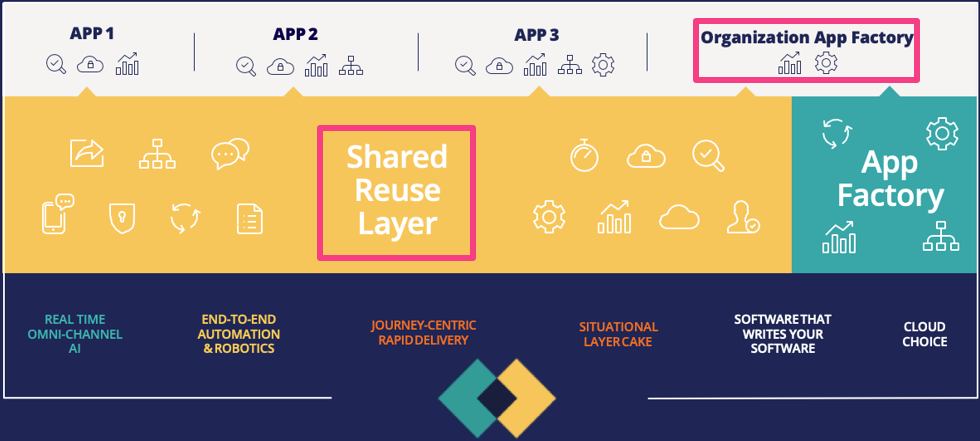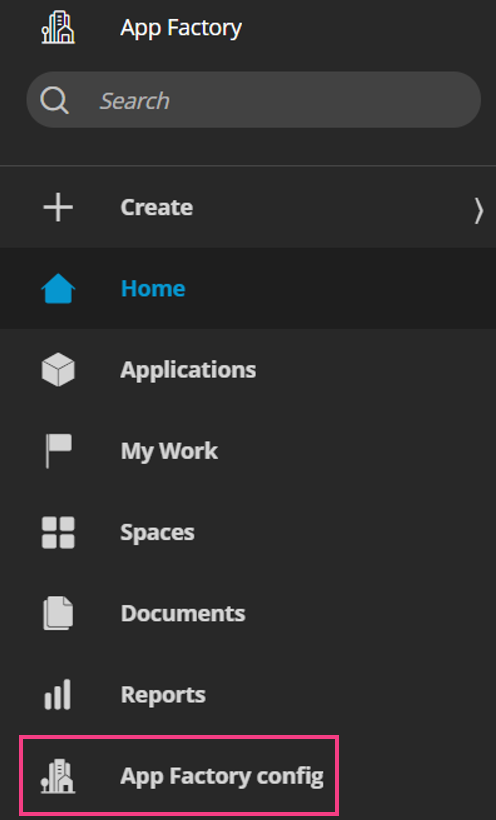
Setting up App Factory
Getting started
On Pega Community, the Low-Code App Factory page is dedicated to curating all resources and training for low-code development and governance. You can also find a link to the App Factory application, hosted on Pega Marketplace.
The application contains end-user portals, application governance life cycles, collaboration tools, and rules that comprise the App Factory experience — all of which can be extended to match the needs of your organization.
On the Pega App Factory application landing page, you will find:
- An overview of the component and its key features
- Versioning and compatibility information
Note: The App Factory component is forward-compatible but has a minimum Platform version requirement.
- A link to the App Factory installation guide
- A link to download the App Factory component
These links and notes evolve as App Factory or Pega Platform releases are incremented, so take a moment to review thoroughly. When you are ready to begin the installation process, download the App Factory component and open the Installation Guide from the Pega Marketplace.
Setting up environments
Depending on your organizational needs and standards, the deployment of Pega App Factory is flexible.
At a minimum to get started, you need at least one Pega Platform environment running a compatible version of the Platform (see above for compatibility info). Based on the level of application governance and that DevOps you are looking to achieve, you can scale your App Factory deployment with additional environments and Deployment Manager:
Pega recommends that App Factory be set up with:
- One dedicated development environment.
- One dedicated production environment.
- One environment running Deployment Manager.
The segregation of environments between development and production minimizes risk of production downtime or quality issues introduced by development activity. In addition, App Factory value is maximized with Deployment Manager to enable automated application promotions and enforce automatic quality and guardrail gates.
Installing App Factory
Once your Pega Platform environments are acquired, it is time to install the App Factory component.
Download the installation guide accessible from the App Factory Pega Marketplace page.
The first half of the installation guide walks you through the foundational components of App Factory setup:
- Importing the component.
- Creating initial administrator & setup operators.
- Establishing a shared reuse layer.
- What is it: This is the foundational layer to any applications built within your App Factory. Seeding this layer with reusable components and constructs, such as enterprise authentication and common integrations, reduces duplication of effort and jump starts development projects.
- Establishing an Organizational App Factory layer.
- What is it: Built on top of the App Factory component shipped with Pega; this layer stores any extensions and customizations you need for the tools and life cycles provided by Pega.
- Inviting users to the system (this can be done later as well, as covered below).
The remainder of the installation guide runs through configuration of several features which are not critical-path, but are recommended for getting the most out of App Factory.
- Automatic application provisioning.
- DevOps and automatic pipeline provisioning.
- Collaboration settings.
- Settings export.
All of these features are configurable from the config page, which is accessible from the navigation pane of the governor’s portal.
Adding users to your App Factory
App Factory comes with four default access groups for various personas, which are added to your organizational App Factory layer as part of the installation process:
- Administrator – Receives full App Studio and Dev Studio access for the system. Grant this role to admins or IT who are proficient with Pega and customize, maintain, and troubleshoot the system and the organizational App Factory layer.
- Governor – Presents the Governor home page that enables elevated access including approval/denial capability for application requests and go-lives. Grant this role to those experienced with Pega and your practices.
- User – Presents the User home page that enables application discovery and requests along with access to applications the user managers. Grant this role to end-users and potential application developers.
- Coach – Presents the Coach home page that enables the same capabilities as the user portal along with a summary of applications the user coaches and reporting capabilities. Grant this role to those proficient with Pega who plan to act as coaches to less experienced developers.
The Installation wizard provides an opportunity to invite individuals to your factory in any one of these capacities.
Administrators have the ability to add users at any time. To add users:
- Log into your App Factory as an operator with the administrator access group enabled.
- If not directed to App/Dev studio initially, from the App Factory homepage, launch the App Factory application and choose to launch as administrator.
- In App Studio, from the Users option in the left navigation pane, click People to access the People landing page.
- At the bottom of the list, click Invite people to your application.
- In the dialog box, search for the user you are looking to invite, or add the individual by email and denote the access group that you would like to grant to them.
- Click Add to grant the users access.
- Close the dialog box to invite the users to your App Factory.
This Topic is available in the following Module:
If you are having problems with your training, please review the Pega Academy Support FAQs.
Want to help us improve this content?



